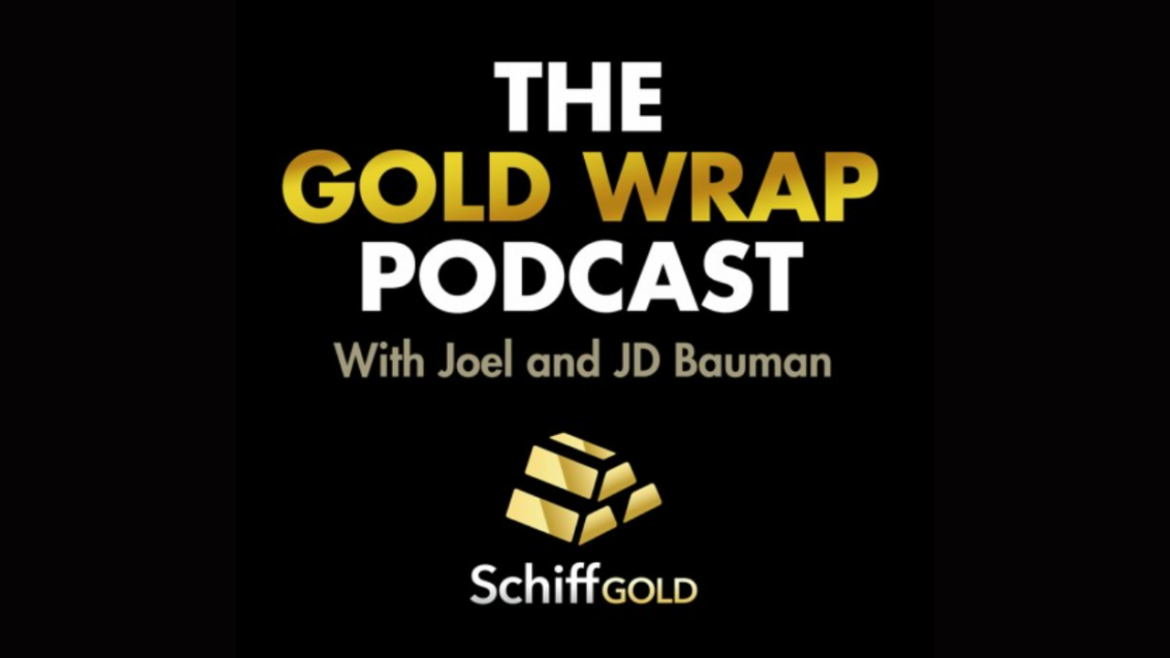Gold has all the potential to go unprecedentedly high. But silver will be gold on
Site:
Precious metals news
 THE KEY SILVER PERCENTAGE CHART BREAKOUTS: Also, What Are The Two Important Technical Levels For Silver Now?
THE KEY SILVER PERCENTAGE CHART BREAKOUTS: Also, What Are The Two Important Technical Levels For Silver Now?May 29, 2024
The silver percentage chart shows three key silver breakouts. The most recent Breakout resulted from a decade of backfilling and Retests. With the silver price up nearly $10 since February, what are the current important technical levels...
Dive deep into the latest trends in gold and other markets with Alan Hibbard in this insightful video.
Despite a recent dip due to cooling demand from China and hawkish Federal Reserve commentary, Wall Street experts remain optimistic about the long-term prospects of silver and gold. Jonathan Krinsky from BTIG believes the "Great Reflation trade" still has potential, highlighting silver's strong performance relative to gold as a sign of a robust precious metals bull market. He asserts that gold has not yet reached its peak, suggesting further upside potential.
Gold prices rose nearly 1% to $2,354 on Monday after bouncing off a two-week low of $2,325, amid thin trading due to holidays in the UK and US. Strong US economic data and Federal Reserve signals of a longer timeline to achieve a 2% inflation target have dampened hopes for monetary easing, putting pressure on gold last week. The upcoming US PCE Price Index is expected to show core inflation rising 2.8% year-over-year and 0.3% month-over-month.
Major retailers like Target and Walmart are offering summer discounts to attract inflation-weary shoppers. These price cuts, primarily on groceries, aim to provide relief as inflation begins to ease slightly. Despite continued consumer spending, reports from Walmart, Macy’s, and Ralph Lauren indicate a shift towards more price-conscious shopping habits, with customers favoring store brands and delaying non-essential purchases.
In a Yahoo Finance interview, Keith Bliss, founder and CEO of BloxCross, discussed the performance of gold, silver, and copper as they hit record highs. Bliss argued that copper, known as "doctor copper" for its economic indicators, is the best investment choice. He explained his preference to hosts Jared Blikre and Sydnee Fried, emphasizing copper's unique advantages over gold and silver.
Oil prices rose amid escalating geopolitical tensions in the Middle East, with Brent crude trading above $83 a barrel and West Texas Intermediate above $79. The increase follows reports of an attack on a Greek-managed vessel in the Red Sea and Israeli tanks entering Rafah in Gaza. Despite OPEC+ maintaining output cuts, oil prices have dipped since April due to weakening Asian demand. Analysts highlight ongoing geopolitical risks, inventory drawdowns, and OPEC's stance on curbs as factors supporting oil prices.
May 28, 2024 - 09:33:11 EDT
Billionaire venture capitalist Chamath Palihapitiya claims the US economy is experiencing a "quasi-synthetic recession," despite a 1.6% GDP rise last quarter. On the All-In Podcast, he suggested that over half of Americans perceive a recession due to potentially misleading GDP components, which include consumer spending, corporate and government expenditures, and exports.
May 28, 2024 - 09:21:06 EDT
Minneapolis Federal Reserve Bank President Neel Kashkari stated that the Fed should see significant progress on inflation before considering interest rate cuts. In a CNBC interview, he emphasized the need for several months of positive inflation data and mentioned the possibility of further rate hikes if inflation does not decrease. Although Kashkari initially anticipated two rate cuts this year, continued inflation may prevent any cuts by year-end. Recent data showed a smaller-than-expected increase in U.S. consumer prices in April.
 Analysts Predict Further Gains for Precious Metals Amid Strong Chinese Demand
Analysts Predict Further Gains for Precious Metals Amid Strong Chinese DemandMay 28, 2024 - 09:14:11 EDT
Gold, silver, and copper have recently pulled back from their record highs but remain close to those levels, with analysts predicting further price increases over the next year. Gold prices, currently at $2,351.3 per ounce, have been supported by a weaker U.S. dollar, lower Treasury yields, and strong Chinese demand, which drove a significant price rally. UBS strategists forecast gold prices to reach $2,500 by September and $2,600 by year-end due to continued robust demand from China and soft U.S. economic data affecting rate cut expectations.
Credit card debt is becoming a growing concern for the economy, with severe delinquencies rising to 10.7% in the first quarter, the highest in 14 years, as reported by the Federal Reserve Bank of New York. Younger borrowers are particularly struggling as interest rates hit a 23-year high. Total credit card debt increased to $1.12 trillion from just under $1 trillion a year ago, signaling potential risks to consumer spending.
Gold prices dropped by 0.3% to $2,344.20 per ounce on Tuesday as investors took profits after a recent rally, influenced by a reduced likelihood of Federal Reserve rate cuts. Despite the decline, gold remained on track for a fourth consecutive month of growth. The market is now awaiting key U.S. inflation data. The drop follows Fed meeting minutes suggesting the current interest rate will be maintained, with discussions of potential future hikes.
Archaeologist Tehiya Gangate discovered a 2,300-year-old gold ring in Jerusalem while working at the Givati National Archaeology Park. The well-preserved ring, set with a red stone, likely belonged to a child from the Hellenistic period. The Israel Antiquities Authority and Tel Aviv University noted that the ring, dating to around 300 BC, reflects the increased popularity of stone-set jewelry following Alexander the Great's conquests. Gangate described the find as an emotionally significant and rare discovery.
As the US devalues and burns through cash at a record-setting pace, gold continues to gain. Gold has risen 89% in the past five years, compared to a disappointing 0.7% for the US aggregate bond index (as of May 17, 2024, according to Bloomberg). Our guest commentator explains why the government is eroding our purchasing power, and what will happen next.
The Comex report for last month correctly identified a potential big move in silver while the same report two months ago preceded a massive up move for the price of gold. The data this month is not as obvious or compelling, but it is clear the stress on the Comex continues to build.
The cost of higher education has skyrocketed. And we have the government to blame.
In the fight against inflation, is it the Fed or the Treasury that calls the shots? The answer is, it’s both. The Fed raises interest rates to make loans less attractive and bring inflation down, but The Treasury has its own set of magic tricks to artificially “stimulate” or “tighten” the economy as well. One of them is a Treasury buyback program, something that was just reincarnated for the first time in about two decades. This is where the Treasury repurchases its own outstanding securities from the open market to increase liquidity, stoke, demand, and bring down yields.
 SETTING UP FOR FAILURE PART 2: Portland General Electric Utility Unsustainable Economics
SETTING UP FOR FAILURE PART 2: Portland General Electric Utility Unsustainable EconomicsMay 26, 2024
As U.S. Utility companies continue to transition to Green Energy, they are setting up for massive failure in the future. In this second update, I show how Portland General Electric in Portland, Oregon, is typical of utility companies' unsustainable economics...
Silver broke $30 per ounce and gold $2,500 this past week. Joel and JD unpack the recent breakout and Peter Schiff's analysis, and what to look out for in the leg up.
Artificial Intelligence has already had an incredibly disruptive effect on many industries. It has allowed inexperienced workers the ability to increase their productivity and outpace older workers with less tech-savvy. It has begun to help some companies make efficient decisions that they would have been blinded to if they had only considered their own industry conventions. AI is different from many other tools because it can shift the direction of industry rather than merely being a tool used towards a predetermined end. Because of its ability to make decisions objectively and create unpredictable objectives, AI will throw a great deal of uncertainty into the prices of money, stocks, and bonds.













